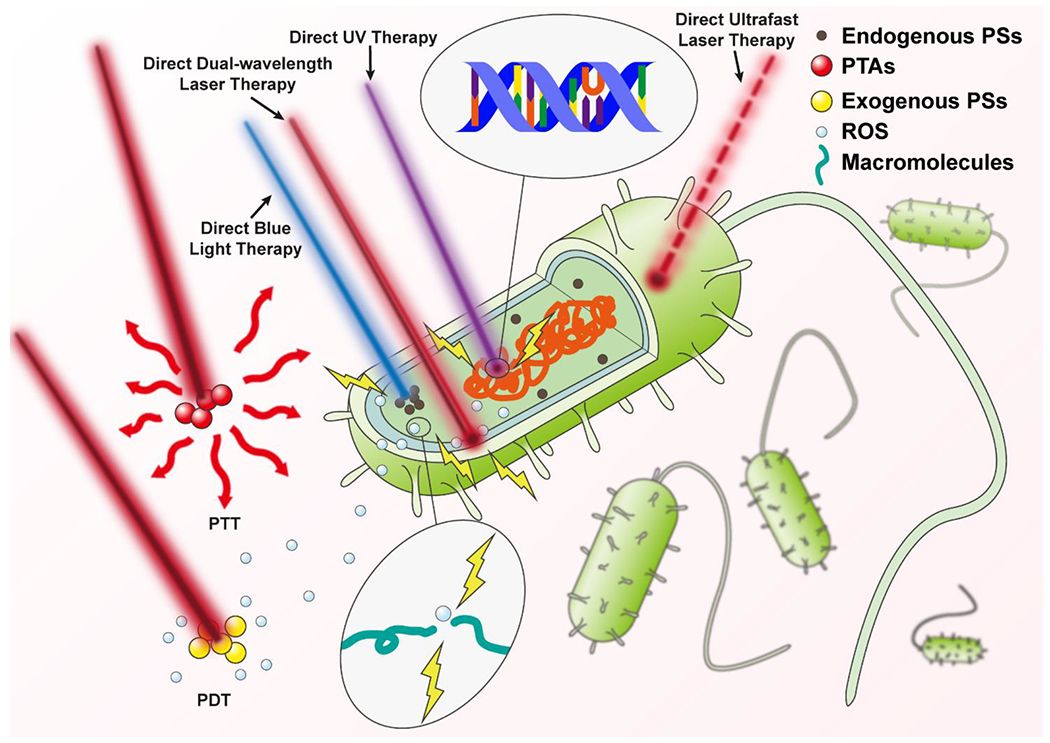Fig. 3.

Schematic illustration of different types of phototherapies for infection treatment. From left to right: Photodynamic therapy (PDT) activates exogenous photosensitizers (PSs), which interact with substrates to produce reactive oxygen species (ROS) that damage biomacromolecules[54, 55] (the colors used in the picture do not directly reflect the actual wavelengths); Photothermal therapy (PTT) relies on the illumination of photothermal agents (PTAs) to generate heat for pathogen inactivation[408] (the colors used in the picture do not directly reflect the actual wavelengths); Direct blue light therapy is believed to activate endogenous PSs to yield similar effects to that of PDT[27]; Direct dual-wavelength laser therapy may reduce membrane potential, activate endogenous PSs, and alter cellular respiration[536]; Direct ultraviolet (UV) therapy induces dimerization of thymine nucleotides preventing DNA replication and translation[539]; Direct ultrashort laser therapy delivers rapid-pulses of light providing microbe specific damage[534, 535].
